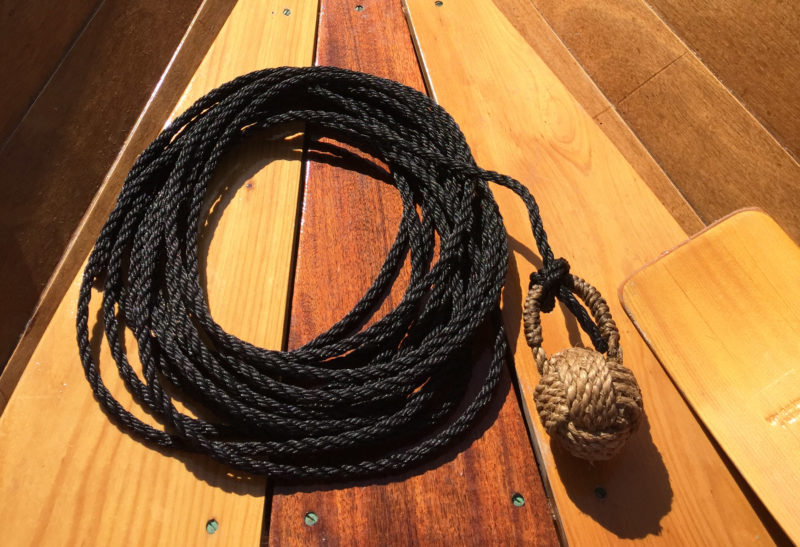 Thomas Head photo and video
Thomas Head photo and videoHaving the monkey’s fist and its heaving line tied together instead of all in one piece frees both to do other jobs.
When I’m camp-cruising, I carry gear that is simple and multifunctional. My heaving line and a monkey’s fist come in handy for a variety of situations. They’re traditionally parts of the same line, but having them separate makes both more versatile.
The separate monkey’s fist makes it possible to use other lines for heaving and to get lines over high branches when setting up camp. The line, 60′ length of ⅜″ laid poly, gets used for everything from tying the boat up at the dock, to setting my sea anchor, warping out of a crowded marina, anchoring, and setting up camp. Tied to the monkey’s fist, its light weight makes throws longer and keeps it afloat for easy retrieval.
The monkey’s fist is relatively easy to tie, taking only about 5 to 10 minutes. It is a series of wraps perpendicular to each other. The monkey’s fist here is tied with a length of manila around a round fishing cork with two ¾-oz fishing leads I’d inserted into it. The lead adds weight for better throwing without losing buoyancy. Golf balls also add some heft and aren’t so dense that a poly monkey’s fist won’t stay afloat with one at the core.
It’s easiest to insert the core after the second series of wraps begins. After the third series of wraps all of the slack is worked out from the bitter end and through the turns. The tail is usually spliced into the integral heaving line at the other end, but a short loop is what I use. The two ends of the line can be tied or spliced together to form the loop, but a quick-and-dirty finish is to cut one end flush and tuck the other in alongside it. Superglue keeps them in place. I finished the one shown here with a quick half-hitch braid around the loop.
When I need to toss a line, I tie it to the monkey’s fist with a clove hitch. There are a couple of different techniques for setting up to throw, but I prefer to coil the line (starting by tucking the tail end between two fingers so I can hang on to it when I’m throwing) into my non-throwing hand and then carefully transfer three or four coils of the line into my throwing hand with the monkey’s fist hanging about even with the bottom of the coils. It is important to coil the line properly. I coil both laid and braided clockwise into my left hand, adding a slight twist with the thumb and forefinger of my right hand to keep the coils loose and even.
I can consistently throw the line and monkey’s fist 50′ to 70′ with good accuracy. I try to get the monkey’s fist well past the target and slightly to one side to avoid hitting the receiver. With a little practice you can get fairly accurate with your throw.
Having a heaving line and monkey’s fist at the ready may just make a critical difference one day in an emergency, but in the meantime it can spare you the embarrassment of throwing a line only to have it land in a heap far short of its target.![]()
A native Floridian, Thomas Head grew up working on his father’s home-built stone crab boat in the small coastal town of Inglis. He has 19 years of service in the U.S. Navy. His account of racing in the Everglades Challenge appeared in our November 2014 issue.
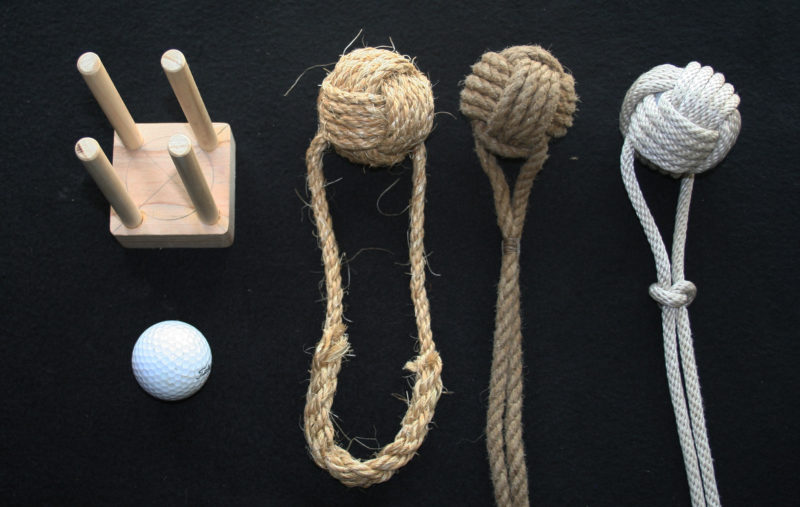 SBM photos
SBM photosWhile a monkey’s fist can be tied by starting the wraps around your fingers, a simple jig makes the process faster and easier to master, especially with soft line like the braided nylon. The jig here is for a golf-ball core and ¼” line. The 7/16” dowels—just large enough to provide clearance for the third set of wraps—are set outside of the perimeter of a 1⅞” circle for a loose fit around the 1.68” ball. The finished monkey’s fists are, from left to right: sisal, finished with a spliced loop; poly, with the tail whipped to the heaving line; and braided nylon. Only the poly monkey’s fist floats.
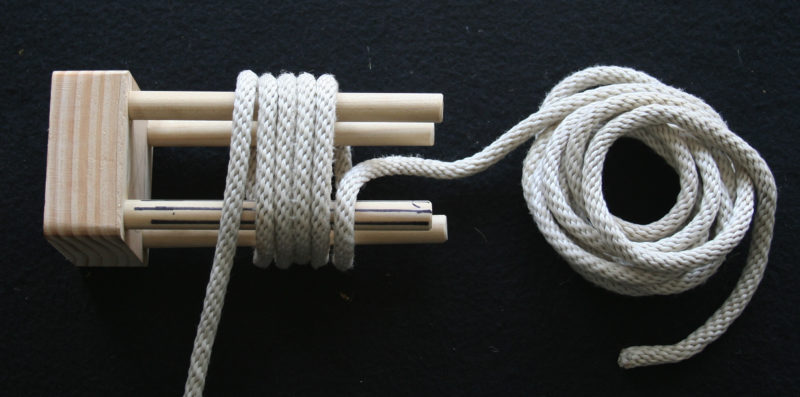
The ¼” line covers the golf ball with wraps made up of five coils, here starting and ending at the striped dowel.
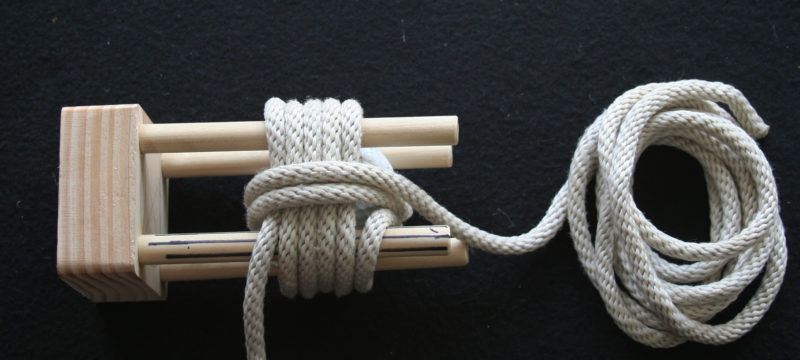
The second set of wraps is made around the first and the golf ball goes in halfway through this step. Note that the second wrap starts by crossing the gap between the first wraps. This is less obvious when tying without the jig.
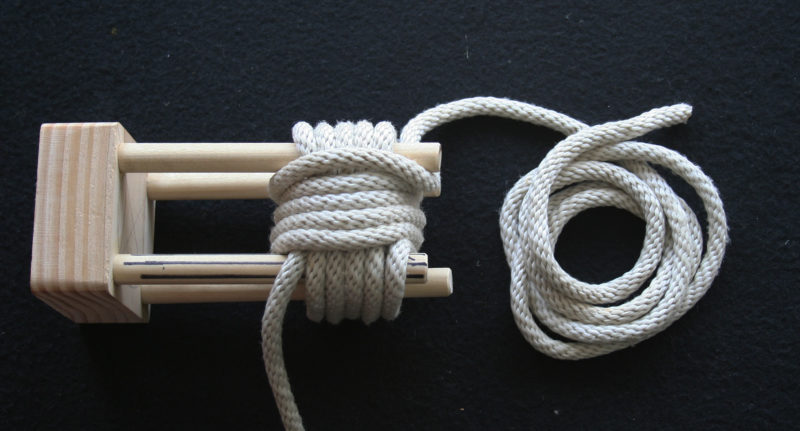
At the end of the second set of wraps, the line goes directly into the gap under the first set.
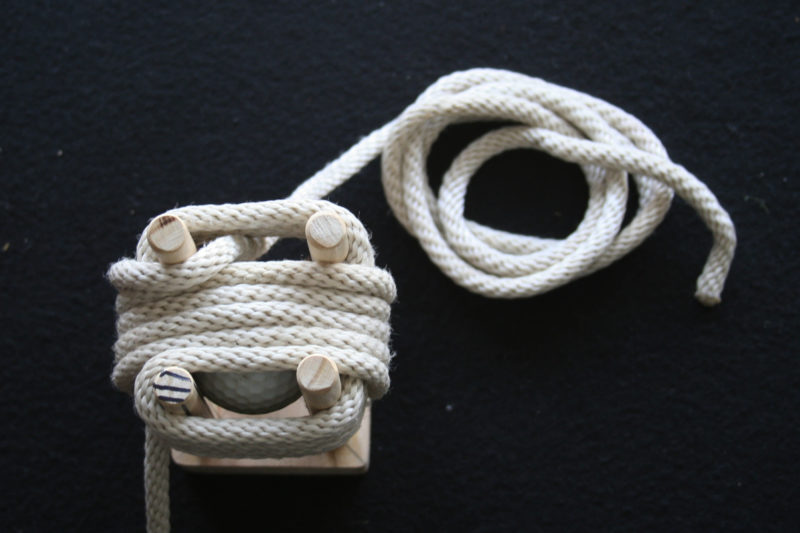
The top view showing the start of the last set of wraps.

When every side of the knot shows 5 wraps, it’s ready to come off the jig.
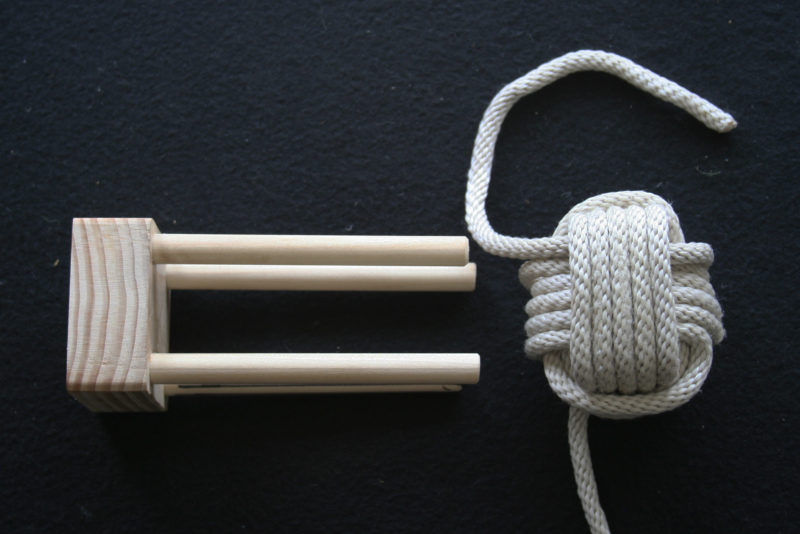
With the last set of wraps complete, the jig can be slipped out. Chase the slack out in a couple of steps. Cinching the line up too quickly will bunch up the wraps.
You can share your tricks of the trade with other Small Boats Monthly readers by sending us an email.
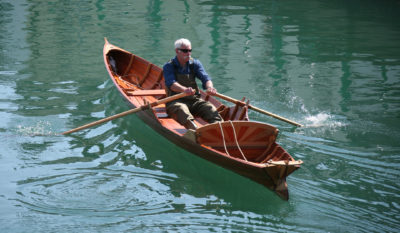
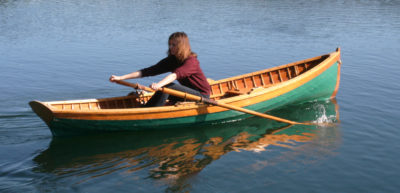

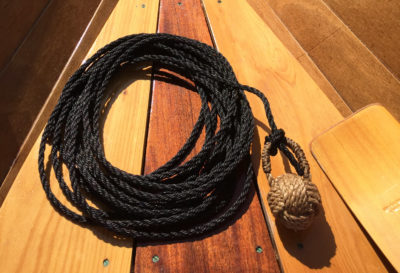
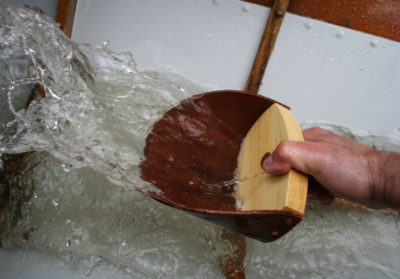
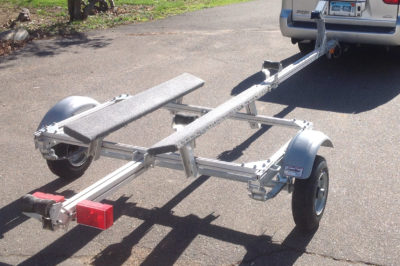
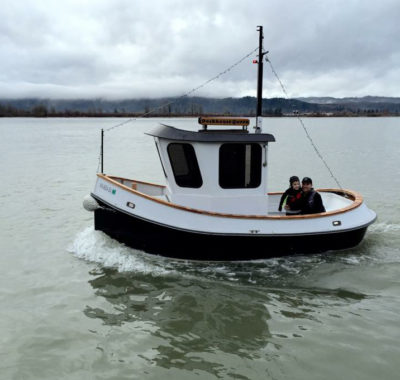
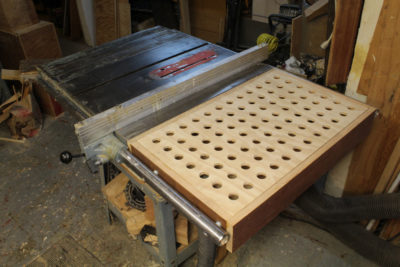
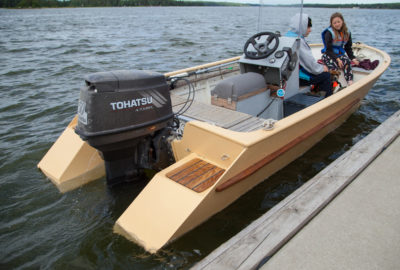
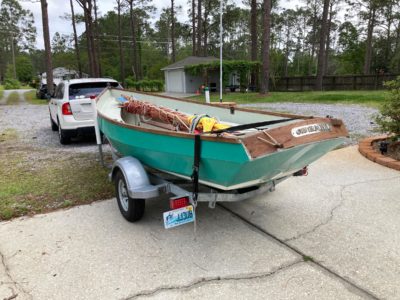
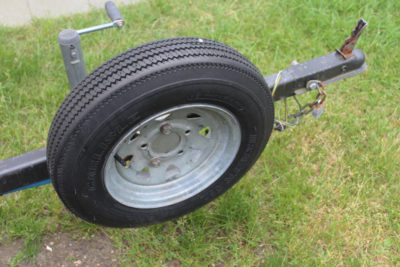
A really good method. I like that it leaves the line free for other uses.
So if I use a baseball instead of a golf ball for the core do I just compensate for size by putting 6-7 wraps per side?
As a general starting point I’d suggest dividing the circumference of the core by 4, and dividing the result by the diameter of the line you’re using. For the ¼” line I use, the way the math works out, the number of inches of the circumference is the number of wraps. A golfball has a circumference of 5¼” and takes 5 wraps of ¼” line; a baseball has a circumference of 9¼”, so 9 wraps.
Excellent. Many thanks!
I sailed as a merchant seaman many years ago and often used a monkey’s fist on the end of heaving lines. We made them up of 12-thread manila, usually with a large nut or other other piece of metal wrapped in a rag in the center. When the knot was done, the whole thing was dipped in red lead or some white topside paint for visibility and durability. The result was a compact, hard, heavy object that could be thrown for a considerable distance. It was also potentially a lethal object. For that reason, monkey’s fists are now illegal in most ports and they have disappeared from use on merchant ships. The version shown in this article is a bit more innocuous than what we used to use, but the readers should be cautioned that they can still be dangerous.
Great to see an article on knots. Rather than having to splice or tie off the ends of the monkey’s fist to make a loop, a good solution is to leave a loop at about the middle point of the knot to tie off to the heaving line. The long loop looks best if it in the middle of the second set of wraps rather than on either end of the set. The other loops fill in underneath it, so there is no gap that requires an extra turn. The starting end of the line lies inside the knot and the finishing end is cut flush after all the slack is pulled out.